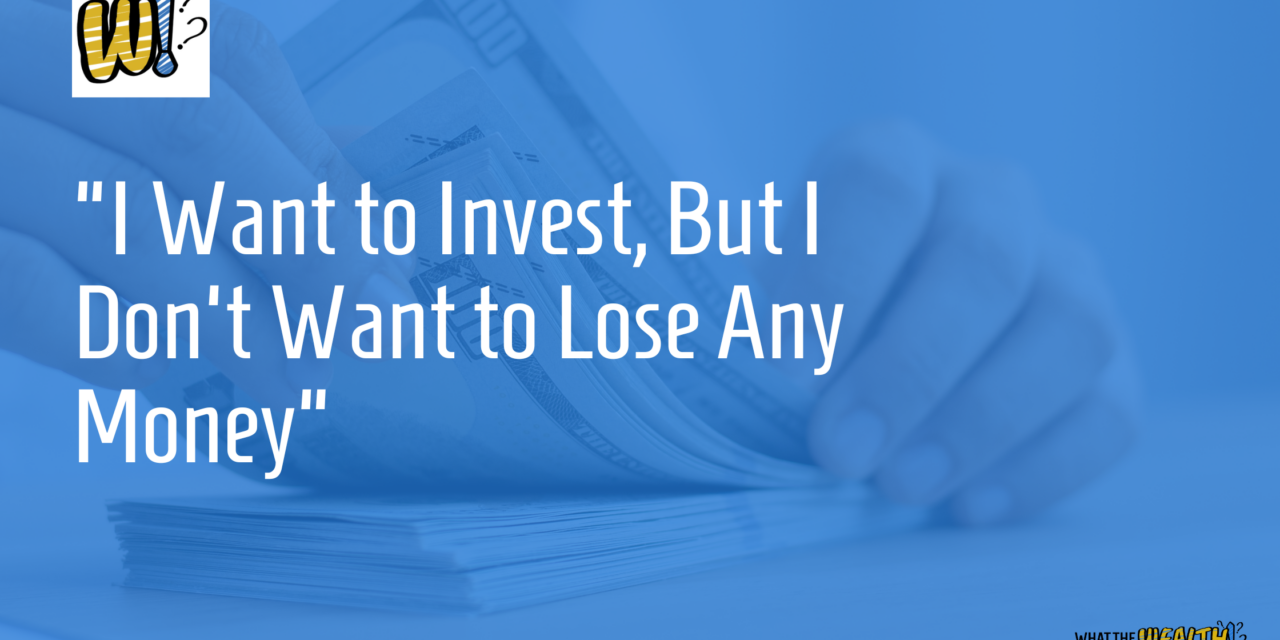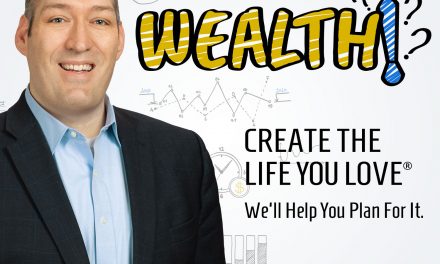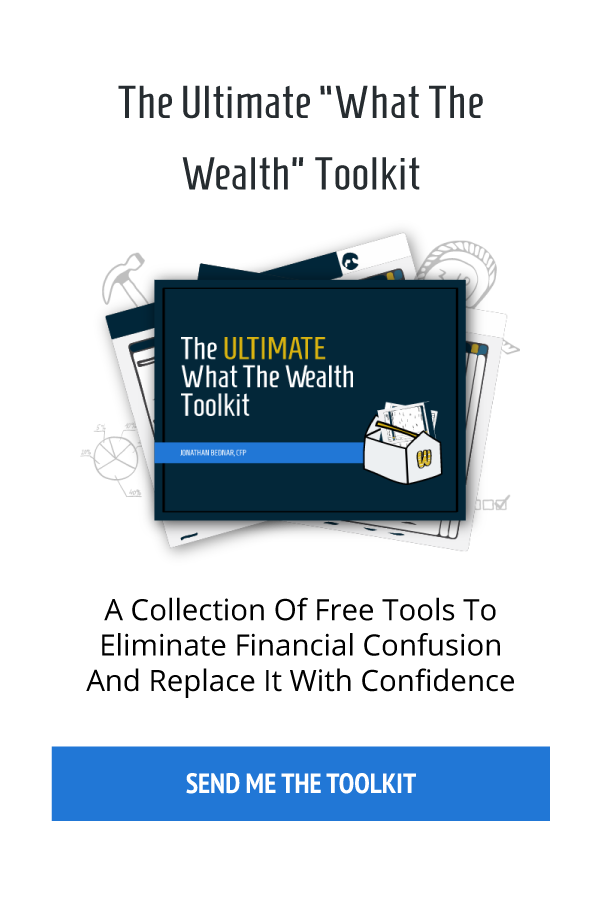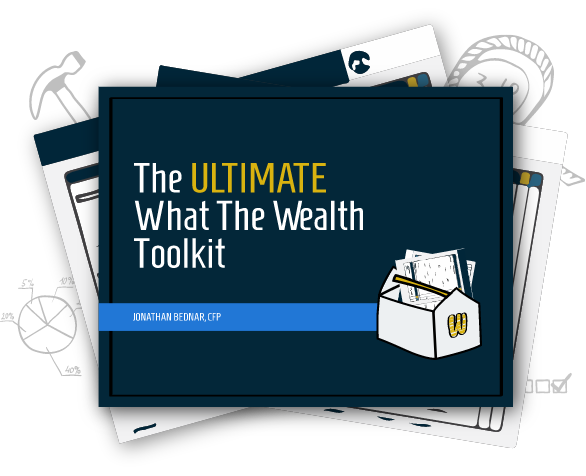It’s a dilemma; you know you should be investing, but you don’t want to lose money. It’s not quite as simple as that, and we’ll discuss it in episode 71.
What is Safe?
I had a meeting with a potential new client last week. She said, “I have $100,000 to invest, but I don’t want to lose money.”
This statement comes from a deeper place, from not understanding the market, so instead of investing, we move to what feels safe. That’s the mindset, and it’s a dangerous one.
We’ve talked a lot this year about how much the media likes to focus on bad news. Bad news sells because fear sells. We hear all this talk of geopolitical risk, what is going on with the price of oil, and especially this year, inflation which is at a 40-year high.
Day after day, all of this is pounded into our heads, and that’s dangerous because it feeds and reinforces negative thoughts.
When faced with fear and uncertainty, we retreat to what feels safe. That’s a good intention, but it is a negative thing when we’re too safe, too conservative, with our money.
It’s normal to feel scared about the market and the things that impact it. What you don’t want to allow is that fear to stop you from making the right decisions, intentional decisions around investing and personal finance, and pursuing your dreams.
Two Doors
When the potential client made that statement, she mean that she didn’t want to lose money in the stock market. But what she wasn’t thinking about was the impact of long-term inflation.
Noted financial author Nick Murray says we all have two doors for retirement. Behind Door #1 is all the money we need for retirement and beyond. Behind Door #2 is less money than we need for our retirement. We run out of money before we run out of years and have to rely on the state or family to take care of us, giving up some of our dignity.
Our objective is to build a plan that produces enough income to walk through Door #1. And part of that plan has to consider how long-term inflation impacts our money.
For the last decade or so, inflation has been pretty low, and we didn’t hear much about it. This year, it has hit a 40-year high, and it’s in the news daily, so impossible to ignore. But even low rates of inflation over the long-term works on our money like termites work on the foundation of a home; it slowly almost imperceptibly eats away until it’s too late to do anything about it.
Inflation does that to our money, eats away at it, and reduces its purchasing power. Consider this fast food example. In the 1990s, a Big Mac meal, the sandwich, fries, and a drink cost $4.59. In 2020, it cost $7.89. On our way to Arkansas for Thanksgiving, we stopped at McDonald’s, and I noticed a Quarter Pounder with cheese costs $9.50!
That’s expensive for fast food—especially when we are anchored to what things used to cost. If you haven’t ordered a Quarter Pounder with cheese for a few years, you’d be really shocked at what it costs now.
The impact of long-term inflation on housing is even more stark. In 1990, the median cost for a home was $97,000, and in 2022, that has risen to $380,000, a four times increase in 30 years. Year to year, we don’t notice these increases. Until one day, decades later, we want a Quarter Pounder with cheese and are floored by the cost!
My Guarantee
So we have to invest to combat that. My potential client wanted a guarantee that she wouldn’t lose money if she invested. While there are investments that are considered to be very low risk and some that come with certain guarantees, there is no such thing as a 100% guaranteed not to lose money investment.
What I could guarantee her and you is that if you don’t have a financial plan that produces enough income to outpace inflation, you will lose purchasing power. In ten or 20 or 30 years, the dollar you have today will not buy you the same amount of goods, gas, or house it does now.
In parenting, it’s said that the days are long and the years are short, which also applies to inflation. You don’t feel it day to day. This year you have as things we all frequently buy, like groceries, have been hit by almost double-digit inflation. But for the last decade, you’ve barely noticed.
Inflation is one of the 5 Big Retirement Risks. To combat it, you want to own things that produce income, but you must also have some equity exposure so you can walk through Door #2.
If you have any questions about inflation’s impact on your retirement or any other areas of financial planning, reach out to me.
And check out my new YouTube channels. The videos are short, walk and talks, where I take a stroll and talk about whatever’s on my mind. And I have a Paradigm Wealth Partners channel too.
Listen to the Full Episode:
What You’ll Learn In Today’s Episode:
- What often lies beneath the fear of losing money.
- The negative side of being too safe.
- The importance of not letting fear guide your decision-making.
- Two doors you have available for retirement.
- The creep of inflation and purchasing power.
- What you can guarantee, and what you can’t.
Ideas Worth Sharing:
- “The statement of ‘I don’t want to lose money,’ comes from a deeper place of ‘I don’t know what’s going on in this market; I don’t understand it, so I want to go with what feels safe.’” – Jonathan Bednar
- “Being too safe can have a negative effect on your portfolio.” – Jonathan Bednar
- “It’s not okay to let fear paralyze you and prevent you from making intentional decisions and pursuing your dreams.” – Jonathan Bednar
Resources In Today’s Episode:
- Nick Murray
- Jonathan Bednar: Email | Twitter | LinkedIn
- What The Wealth?! by Jonathan Bednar
Enjoy the show? Use the Links Below to Subscribe:





